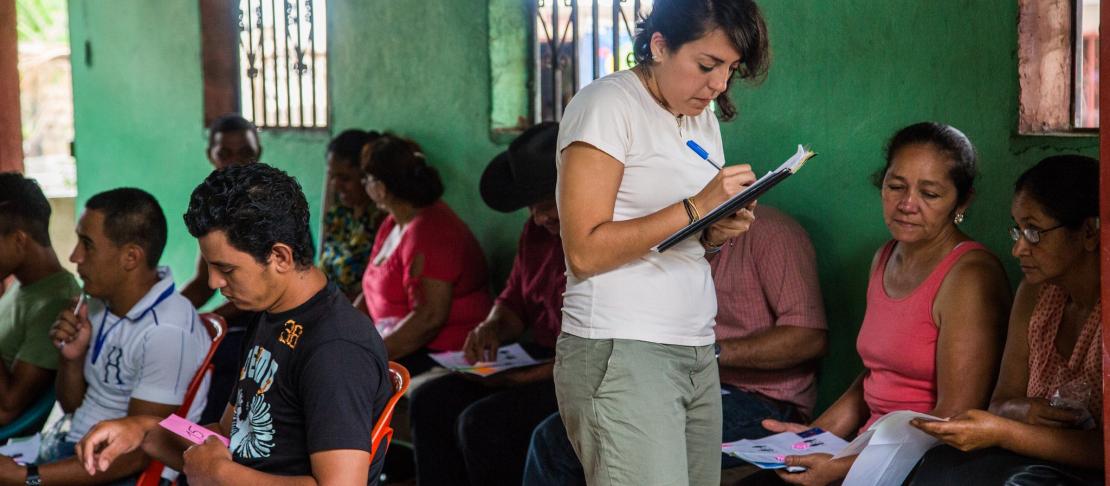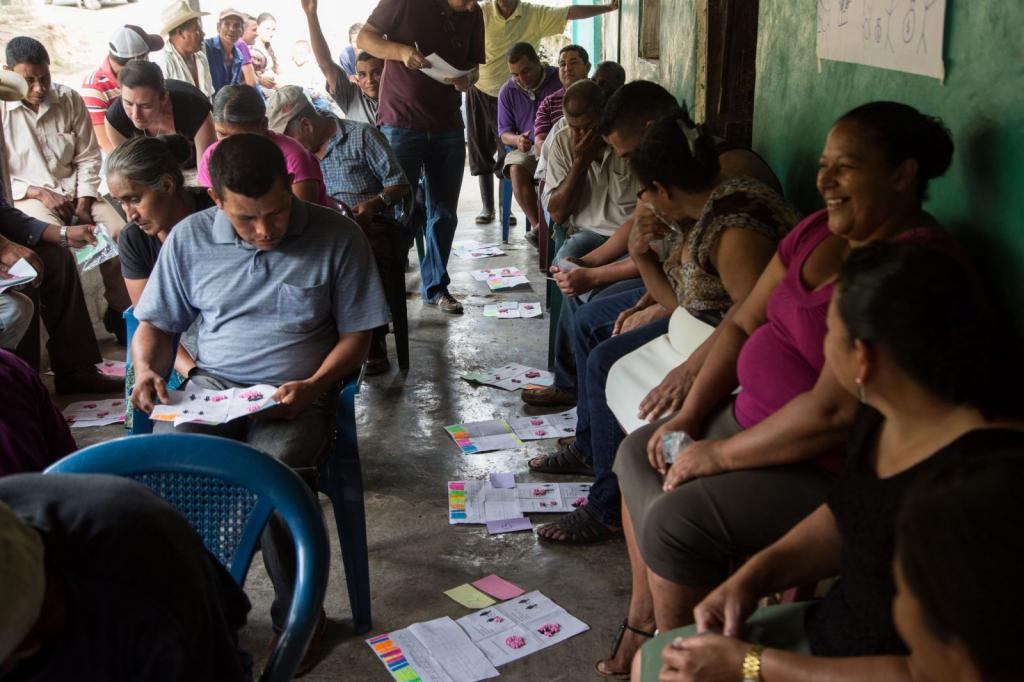Index insurance for small farmers: a primer

CCAFS Latin America interviews Sofía Martínez Sáenz on index insurance and its perks for agriculture under climate change.
Farmers across the globe are increasingly vulnerable to the whims of extreme weather events and climate variability, often facing extensive losses of their crops and erosion of their livelihoods.
Traditional insurance can fail small producers with little resources and high exposure to losses. But in Honduras, a team from Columbia University’s Institute for Climate and Society (IRI), supported by the CGIAR Research Program on Climate Change, Agriculture and Food Security (CCAFS) and USAID, has successfully designed an insurance product that addresses the inefficiencies of more classic solutions for smallholders—an index crop insurance now in demand on the national market and sparking interest in the region.
So, what’s up with index insurance? We spoke with Sofía Martínez Sáenz, who led the product design process in Honduras and is a member of IRI’s Financial Instruments Sector Team.
What is index insurance? And how does it stand apart from traditional insurance?
Index insurance is a relatively new tool through which losses and their related payouts are determined using a specific variable, with insurance companies not having to send people into the field to assess the damages.
Through index insurance, companies can create more affordable products and reach more farmers.
For the past 50 to 100 years traditional insurance has served farmers with a lot of land: if something happened, the insurance company only had to send one assessor to check losses over a large area; but for smallholder farmers, a lot of assessors need to visit many properties, often inaccessible in developing countries. These administrative costs can result in higher premiums for farmers.
Through index insurance, companies can create more affordable products and reach more farmers. There are two popular index insurance types: area-yield, which requires lots of data to develop a model, and weather index insurance, which uses weather variables measured through rain gauges and/or remotely-sensed data.

Farmers are critical actors in deciding how a future index insurance product should look to suit their needs and vulnerabilities. Photo: Elizabeth Gawthrop (IRI)
How can the insurance company assess accurately the consequences of an extreme event without anybody in the field?
There is a rigorous research and design process before an index insurance product hits the market. This is where IRI’s work in the last decade comes in. It requires a lot of work together with the farmers. First, we identify what risks the farmers face, their timing and magnitude; we then compare this feedback with different data sources to find what has triggered a payout in the past. So you can set a trigger level and payouts can be made without loss-assessment visits.
How accurate is this process?
It’s critical to be as accurate as possible when defining a trigger, as it might be that a product might not pay when there is an event or pay when there isn’t. That’s why in the last 5–10 years there has been a shift in the index insurance community from rain gauge-based products to satellite-based ones. Satellites can cover a lot more ground, which helps developing countries without many reliable rain gauges.
Who do you need to create an index insurance product?
We need to bring in local experts who know the production cycles (i.e. from agriculture ministries, farmers’ associations, institutes specializing in particular crops, etc.)
But you need to rely on the farmers to really grasp their experiences on the ground.
Regulators also are very important, from initial design to regulatory approval. Index insurance is a ‘new’ technology and it’s often unregulated. By involving regulators, they can gain a deep understanding of the future product so that when it’s ready, they know what they’re dealing with.
What was the reaction to the project?
Farmers tend to be a lot more receptive to these opportunities as they lack options; this can be a very eye-opening experience and they are usually very excited. However, it can be common for farmers to lack trust in financial institutions; but this can be usually be managed through education. Insurance companies can be more apprehensive to adopt a new product, as they’re risking their reputation if it doesn’t work out.
What is the estimated impact of this product?
There are about 2000 farmers that would now be directly impacted by the current product as it is. But as we focused on the biggest Honduran staple crops—maize and beans—there is the potential to reach up to 100,000 farmers in the country and even more regionally.
How affordable is weather index insurance?
Relative to farmers' usual costs, index insurance would take up about 10% of this amount. The main hurdle is at the beginning of the season when the farmers lack almost any liquidity, so a lot of these financial products tend to be associated with loans.
What were the echoes of the Honduras project at the regional level?
There are groups already building similar products in Guatemala and El Salvador, with Costa Rica and Panama also interested.
Read more:
- Photo essay: Upping our game: A crop insurance project in Honduras proves wildly successful
- Flagship webpage: Climate Services and Safety Nets: Index-based insurance
- Brochure: Weather-based index insurance for climate risk in agriculture
Alexandra Popescu is the Communications Officer for CCAFS Latin America.



